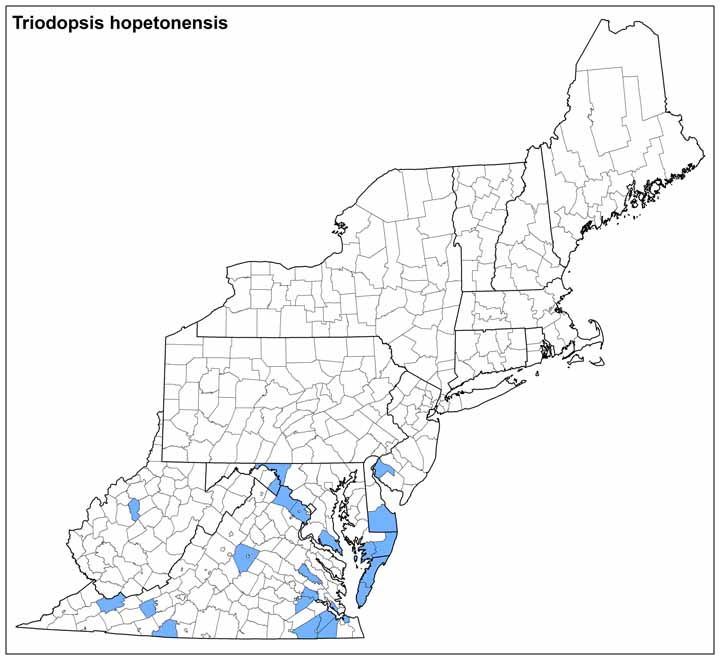Land Snails
.jpg)
Photo(s): Views of a Triodopsis hopetonensis shell © Larry Watrous. Note the rising spire and buttressed basal tooth.
Click photo(s) to enlarge.
Triodopsis hopetonensis (Shuttleworth, 1852)
Family: Polygyridae
Common name: Magnolia Threetooth
Identification
Width: 11-13 mm
Height: 5.5-6.5 mm
Whorls: 5+
The three-toothed Triodopsis hopetonensis has a medium-sized, tongue-shaped parietal denticle, a thick, rounded tooth on the peristome, and a small basal tooth upon a buttress. Compared with T. fallax, the narrow umbilicus is not deep and the teeth are more widely spaced. The depressed-globose outer shell has close radial striae. Its central spire is somewhat pronounced.
Ecology
This snail prefers moderately damp habitats, and often occurs in large numbers. It may be found in woodland, in open grassy areas, and very commonly in urban settings (Hubricht, 1985). It can also be seen near salt or brackish water (Pilsbry, 1940).
Taxonomy
Other names for T. hopetonensis include Helix hopetonensis, H. tridentata, H. t. var. ephabus, Polygyra hopetonensis, P. h. var. charlestonensis, and Triodopsis fallax hopetonensis.
Distribution
Triodopsis hopetonensis is widespread throughout the southeastern United States, stretching as far north as Maryland and west to Louisiana, especially along the coast. In Virginia it lives on the southeastern shore and Piedmont.
Conservation
NatureServe Global Rank: G4G5
NatureServe State Rank: S3S4
Meegan Winslow, Ken Hotopp 10/2012
Range Map (click to enlarge)


